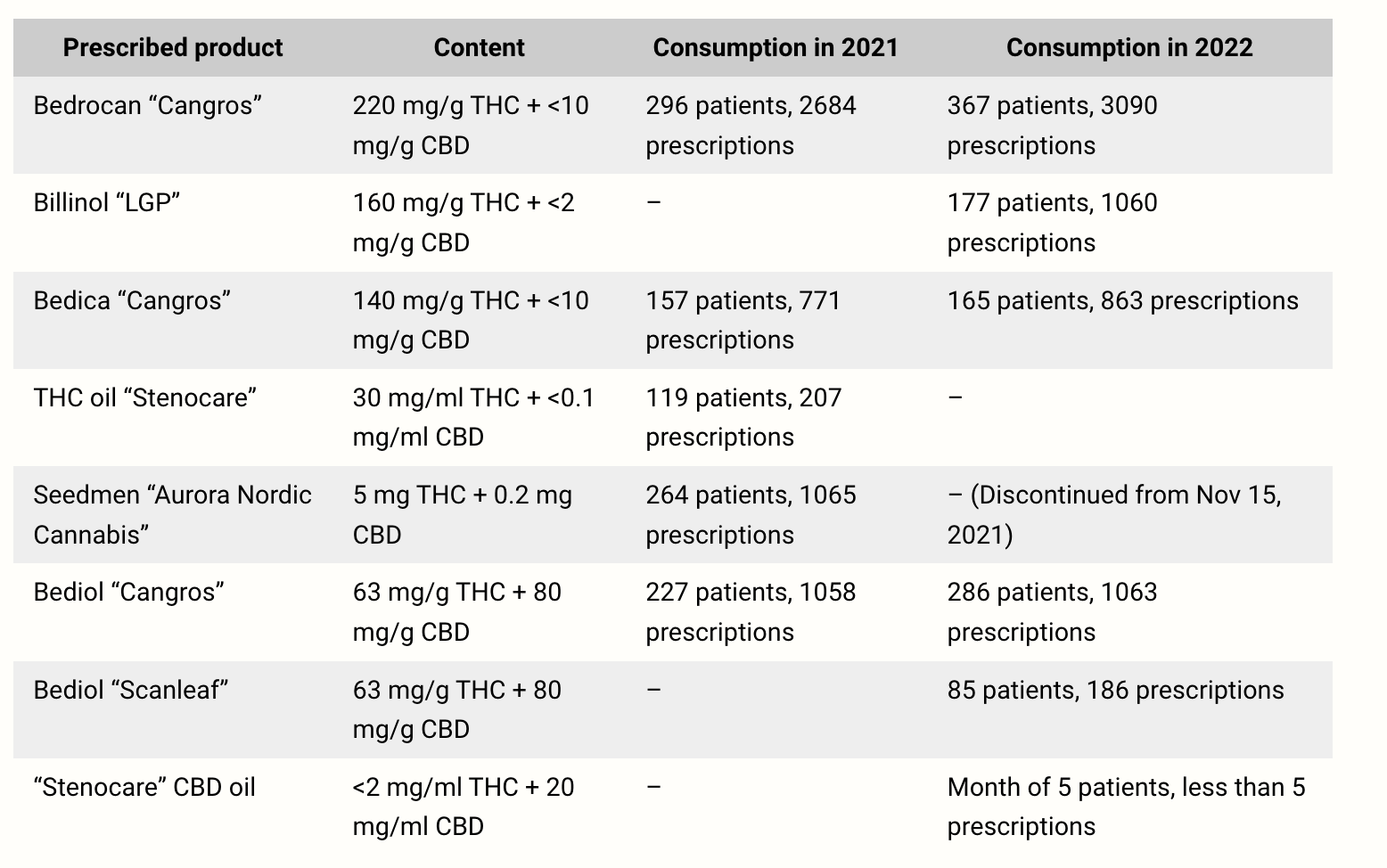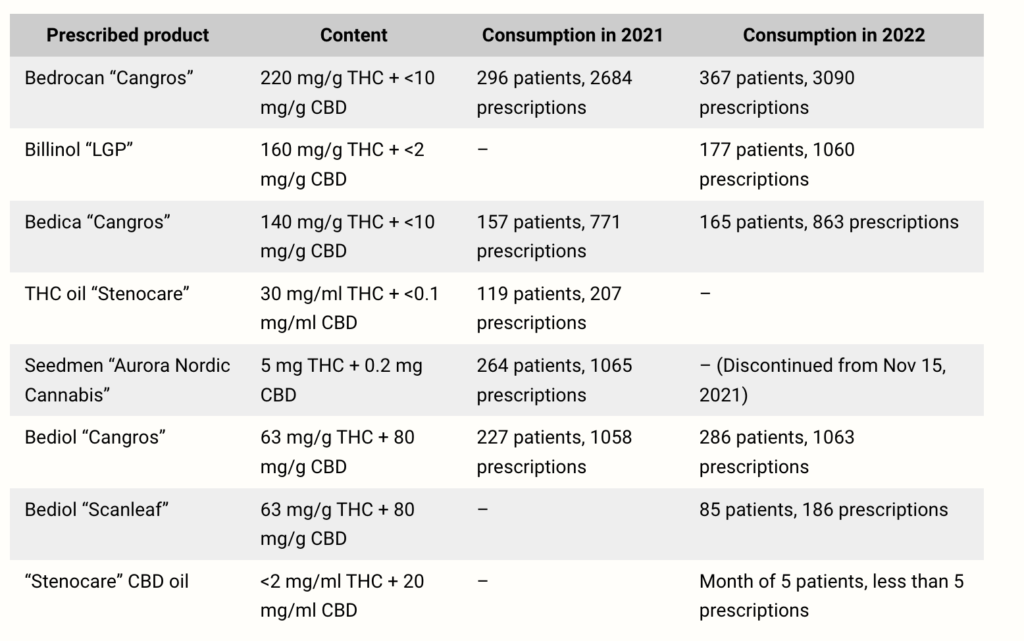The Danish Medicines Agency has published the latest findings from the country’s ongoing medical cannabis pilot programme.
Denmark launched its medicinal cannabis pilot programme in 2018, allowing doctors to prescribe cannabis-based products for patients with certain qualifying conditions.
Now officials have published the latest findings from the programme, which is expected to run until 2025.
The report outlines key information regarding suspected adverse reactions, consumption trends and overall safety of prescribed cannabis products during the period of 2021-2022.
Overview of side effects
During the specified period, the agency received 19 reports of suspected adverse reactions related to cannabis products covered by the pilot programme. This is a significant reduction from the 20 reports received in 2020.
The reports were split into nine cases in 2021 and 10 in 2022, only one of which was classified as a suspected serious adverse reaction.
Despite an increase in the number of prescriptions for cannabis products in 2021 and 2022, annual reports of adverse reactions decreased by half. The Danish Medicines Agency confirms that these reports did not reveal any safety concerns and that no batch-related side effects were identified during the period.
The document provides a detailed analysis of reported side effects, classifying them into two categories: serious and non-serious. The majority of reports (18 of 19) were for suspected non-serious side effects, such as dizziness, stomach pain, anxiety and diarrhoea. One report noted a suspected serious side effect, namely substance-induced psychotic disorder attributed to an overdose.
The agency carefully analysed each report to assess the potential cause-and-effect relationship between the final cannabis product and the reported side effect. It should be noted that all reported side effects were already known for authorised medicines containing cannabis and no new risks were identified.
Trends in medical cannabis use
Despite the decrease in the number of reports of adverse effects, the report highlights an increase in the consumption of finished cannabis products. In 2021 and 2022, eight finished cannabis products were made available to consumers, leading to an increase in prescriptions. However, these prescriptions were distributed to fewer Danish patients than in 2020.
Consumption data below describes the types and concentrations of finished cannabis products, as well as the corresponding number of citizens and prescriptions reimbursed. Indications for prescribing cannabis included neurogenic pain, neuropathic pain, chronic pain, and pain, in patients aged 26 to 79 years.

Credit: Danish Medicines Agency
This article was originally published by Newsweed and is reprinted here with permission.
The post Denmark publishes new findings from medical cannabis pilot appeared first on Cannabis Health News.
Go to Source
Author: Aurélien Bernard


